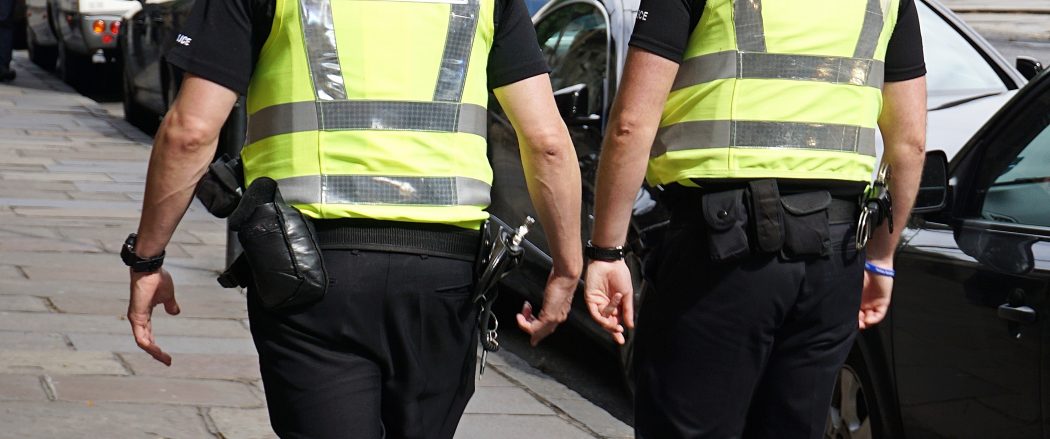To nurture the skills of resilience is key to providing young people with the ability to cope with stress, adversity, failure and challenges. Resilience is evident when young people have a greater ability to “bounce back” when faced with difficulties and achieve positive outcomes.
Resilience empowers the individual to assess risks, be aware of peer pressure and influence and how this affects decision making. It guides the individual to behave in a lawful manner and to encourage others to resist unlawful/criminal activity.
Knife Crime
Knife crime has a huge impact on children and the communities in which they live. It is a societal problem and it cannot be tackled by schools or single agencies alone.
Schools may be able to identify, support, help and protect children on the school site. They can teach children/young people about the dangers of knives and related dangers.
Knife crime is a term used commonly in the media to refer, primarily, to street based knife assaults and knife-carrying. However, there are many different criminal offences relating to knives. For example:
- it is an offence to threaten or cause harm to a person with a bladed weapon.
- some bladed weapons are prohibited from being sold or purchased, including to anyone under the age of 18.
- offences such as robbery or assault can be aggravated if a knife is involved.
- it is also an offence to carry a knife in a public place without good reason.
In the 12 months to September 2018, knife crime had increased by 68.4% across England and Wales (excluding the Greater Manchester Police area) compared with 12 months up to September 2014 and by 55.5% across the Metropolitan Police Service area of London over the same period.
Public perception of knife crime being a problem has increased.
The number of sharp instruments found on school property has increased. Data from 21 police forces in England and Wales obtained through a freedom of information request showed that 363 sharp instruments were found on school property in 2017–18.
This is a rise from 269 in 2013–14.6 Research also shows that pupils who self-report as being a victim of knife crime are twice as likely to carry a knife themselves compared with non-victims. Therefore, as we see an increase in victims or those with a fear of knife crime, we can expect to see an increase in perpetrators of knife-carrying and knife crime among both adults and children.
Knife crime is an increasing safeguarding risk to children, both at school and in their local communities.
The highest level of risk is for those children who have been groomed into gangs, for the purposes of criminal exploitation.
Underneath this lies a group of children who have witnessed other children carrying knives, have been the victim of knife crime or know someone who has carried a knife for protection or status-acquisition or who are encouraged to believe knife-carrying is normal through the glamorisation of gangs and knives on social media.
Then there are children who carry knives to school as an isolated incident. For example, they may carry a penknife that a grandparent has gifted them.
It is important to remember that knife crime does not exist in a vacuum and children who are victims or perpetrators may also be experiencing multiple vulnerabilities.
The common denominator of pupils who are found carrying bladed objects into school is their vulnerability. Almost invariably, these children have experienced poverty, abuse or neglect or are living within troubled families. They may also experience social exclusion due to factors such as their race or socio-economic background.
Staff and school leaders are generally confident that children are safe from knife crime at school and say that they keep pupils safe on the premises through policies and practice, their zero-tolerance approach to bladed objects, their clear expectations of pupils’ behaviour, good levels of supervision at the start and end of the school day, including on the school gate and at the bus stops, and the visibility, if possible, of a police officer at the school.
The most dangerous time for children is shortly after school, between 4pm and 6pm. So, while children might be safe on site, their safety after school is a concern for children, their parents and their teachers.
It is clear that children need help and support to prevent them becoming either victims or perpetrators of knife crime.
County Lines
County lines is a major, cross-cutting issue involving:
- drugs
- violence
- gangs
- safeguarding
- criminal and sexual exploitation
- modern slavery
- missing persons
County lines is a term used to describe gangs and organised criminal networks involved in exporting illegal drugs into one or more importing areas within the UK, using dedicated mobile phone lines or other form of “deal line”. They are likely to exploit children and vulnerable adults to move and store the drugs and money and they will often use coercion, intimidation, violence (including sexual violence) and weapons.
County lines activity and the associated violence, drug dealing and exploitation has a devastating impact on young people, vulnerable adults and local communities.
Child criminal exploitation is common in county lines and occurs where an individual or group takes advantage of an imbalance of power to coerce, control, manipulate or deceive a child or young person under the age of 18. The victim may have been criminally exploited even if the activity appears consensual. Child criminal exploitation does not always involve physical contact; it can also occur through the use of technology.”
Criminal exploitation of children is broader than just county lines and includes for instance children forced to work on cannabis farms or to commit theft.
The national picture on county lines continues to develop but there are recorded cases of:
- children as young as 12 years old being exploited or moved by gangs to courier drugs out of their local area; 15-16 years is the most common age range.
- both males and females being exploited.
- white British children being targeted because gangs perceive they are more likely to evade police detection but a person of any ethnicity or nationality may be exploited.
- the use of social media to make initial contact with children and young people.
- class A drug users being targeted so that gangs can take over their homes (known as ‘cuckooing’).
We do know that county lines exploitation is widespread, with gangs from big cities including London, Manchester and Liverpool operating throughout England, Wales and Scotland.
Gangs are known to target vulnerable children and adults; some of the factors that heighten a person’s vulnerability include:
- having prior experience of neglect, physical and/or sexual abuse.
- lack of a safe/stable home environment, now or in the past (domestic violence or parental substance misuse, mental health issues or criminality, for example).
- social isolation or social difficulties.
- economic vulnerability.
- homelessness or insecure accommodation status.
- connections with other people involved in gangs.
- having a physical or learning disability.
- having mental health or substance misuse issues.
- being in care (particularly those in residential care and those with interrupted care histories).
- being excluded from mainstream education, in particular attending a Pupil Referral Unit.
Some potential indicators of county lines involvement and exploitation are listed below, with those at the top of particular concern:
- persistently going missing from school or home and / or being found out-of-area.
- unexplained acquisition of money, clothes, or mobile phones.
- excessive receipt of texts / phone calls and/or having multiple handsets.
- relationships with controlling / older individuals or groups
- leaving home / care without explanation.
- suspicion of physical assault / unexplained injuries.
- parental concerns.
- carrying weapons.
- significant decline in school results / performance.
- gang association or isolation from peers or social networks.
- self-harm or significant changes in emotional well-being.
Any practitioner working with a vulnerable person who they think may be at risk of county lines exploitation should follow their local safeguarding guidance and share this information with local authority social services. If you believe a person is in immediate risk of harm, you should contact the police.
Source – National Crime Agency
Local Support

Embrace Child Victims Of Crime
Helping young crime victims and witnesses recover from trauma Embrace Child Victims Of Crime is a specialist support service for young victims and witnesses to crime on behalf of the Police and Crime Commissioner for Cambridgeshire and Peterborough. The aim of the Cambridgeshire-based charity is to help children, young people, and families from all over
Read More About Embrace Child Victims Of Crime
SAFE
We are a voluntary service focused on supporting young people identified by services as being at significant/moderate risk of Criminal Exploitation within Cambridgeshire and Peterborough. We can work with young people up to the age of 17, currently we have no minimum age restriction. We take referrals from a range of statutory and community services
Read More About SAFEResources
External Links
- Anti-bullying Alliance
- Anti-bullying Alliance Free cpd online Training
- Ben Kinsella Trust Knife crime lesson plans and resources
- CEOP Thinkuknow – Online and offline safety – Professionals Site
- CEOP Thinkuknow – Parents Site
- Community Eyes and Ears
- Educate Against Hate
- Educate Against Hate
- Fearless
- Gang Youth Violence
- GOV.UK County Lines Guidance for Schools
- Keep your head – Victims of crime
- Kidscape
- No Knives Better Lives
- Stand Up – anti-discrimination education



